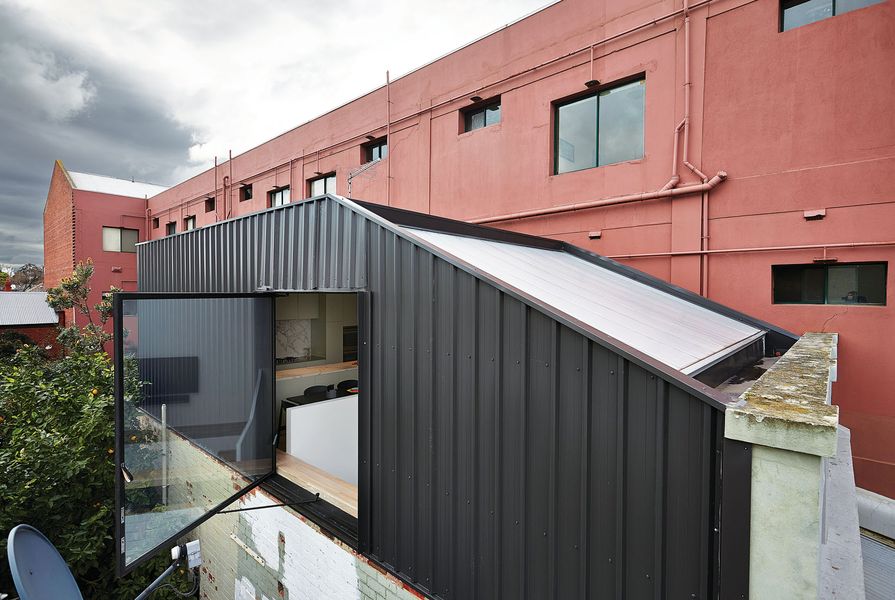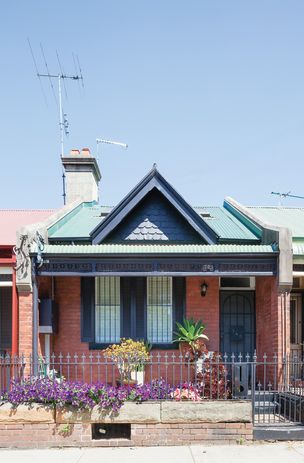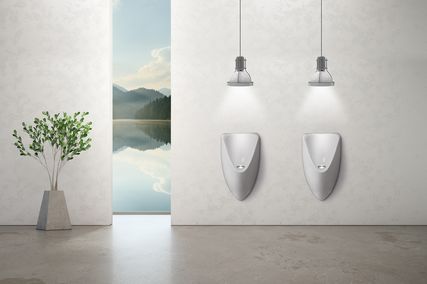The street elevation of Edwards Moore’s terrace house.
Image: Fraser Marsden
Australia’s traditional inner-city terrace house is a well-loved typology, but very few people would argue it is a typology well-suited to contemporary needs. How, then, can it be adapted to accommodate today’s way of living?
Held in the Domo Collections showroom in Paddington, Sydney, in late October, Our Houses: The Terrace House was an event that set out to tackle just this question. Juliet Moore of Edwards Moore and Shaun Carter of Carter Williamson Architects, together with their clients, shared their stories of transforming inner-city terrace houses – one in Melbourne and the other in Sydney. Both terrace houses were typical of their kind – narrow, tight, and crying out for natural daylight.
“Twin light cannons” in Carter Williamson’s terrace conversion bring daylight into the narrow interior but can also flush out warm air when needed.
Image: Katherine Lu
So, how DO we live today? We no longer open a door to go into the kitchen to cook, and open another door to eat dinner in a different room. The way we live today is very much built on large open spaces, with a continuous kitchen, dining and living space being the hub of the home. It is also about spatial flexibility, where we can use the same space for different activities.
While both architects faced the same challenge – providing contemporary living spaces in the traditional typology of the terrace house – they took two completely different approaches.
The street elevation of Carter Williamson’s terrace house.
Image: Katherine Lu
Moore’s Light Box in Melbourne’s Carlton North takes the form of a series of connected “light boxes” that make the home feel bigger and brighter. The house was given a “roof-lift,” which added another level and opened up opportunities to have views from the upper level. Occupying this light box is the open kitchen, connected to a second light box – a living space floating on a landing level a few steps down the stairs. The flooring of this landing is made of mesh, allowing the shower of light from the new, translucent roof to continue through to the ground floor.
Carter’s Light Cannon House in Sydney’s Annandale also tries to bring in as much light as possible, but with a different kind of roof-lift. Two eponymous light cannons replaced the existing roof, doubling the height and amplifying the amount of light. The result is a bright open kitchen, dining and living space with the cannons’ shapes and exposed structure introducing a cathedral-like spatial experience.
Two terrace houses were reimagined in two different ways to answer the same question. Both have not only addressed the matter but also enhanced the experience of the spaces, providing two beautiful homes to suit today’s Australian way of life.
Both the Light Box and the Light Cannon House are featured in a new book The Terrace House published by Thames & Hudson and edited by Cameron Bruhn and Katelin Butler.
























